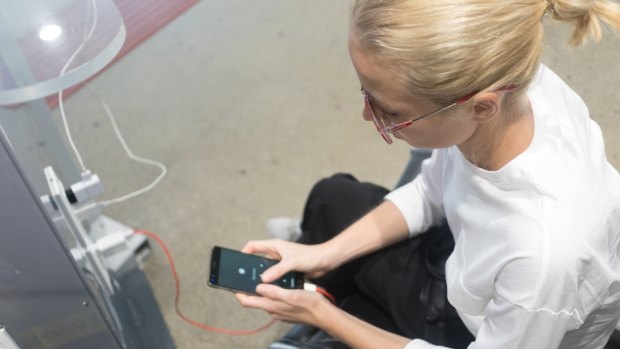This was published 4 years ago
'Like using a dirty toothbrush': Why you shouldn't use airport USB chargers

It's safer to plug your regular charger into a power socket or use a portable power bank.Credit: Shutterstock
If you're one of those travellers who heaves a sigh of relief when you come across a free USB port at the airport so you can send those last few messages or post a not-so-humble brag to social media about where you're going, I'm sorry to be the bearer of bad news.
Cybercriminals can modify these USB charging stations to install malware on your phone or secretly download information, Caleb Barlow, vice president of X-Force Threat Intelligence at IBM Security in the US, told Forbes.
"Plugging into a public USB port is kind of like finding a toothbrush on the side of the road and deciding to stick it in your mouth. You have no idea where that thing has been," he said, adding that the port can transport data.
It's far safer to plug your regular charger into a power socket or use a portable power bank, he said.
If you must use a public USB port, he suggests using a mobile security gadget known as a Juice-Jack Defender.
"It's a little dongle you can put in front of your charging cord that basically blocks any data from passing down the cord. It only passes the voltage," he said.
While this might sound excessively cautious to some, new research from IBM security found that travellers are being increasingly targeted by hackers.
The 2019 IBM X-Force Report said the transport industry was the second most attacked sector in 2018, accounting for 19 per cent of all attacks observed by IBM X-Force.
Barlow also recommends avoiding tech accessories, such as charging cords or USB stick, left behind by other travellers. There's a possibility that these could contain a chip inserted by a cybercriminal, allowing them to take control of your device.
Sign up for the Traveller newsletter
The latest travel news, tips and inspiration delivered to your inbox. Sign up now.